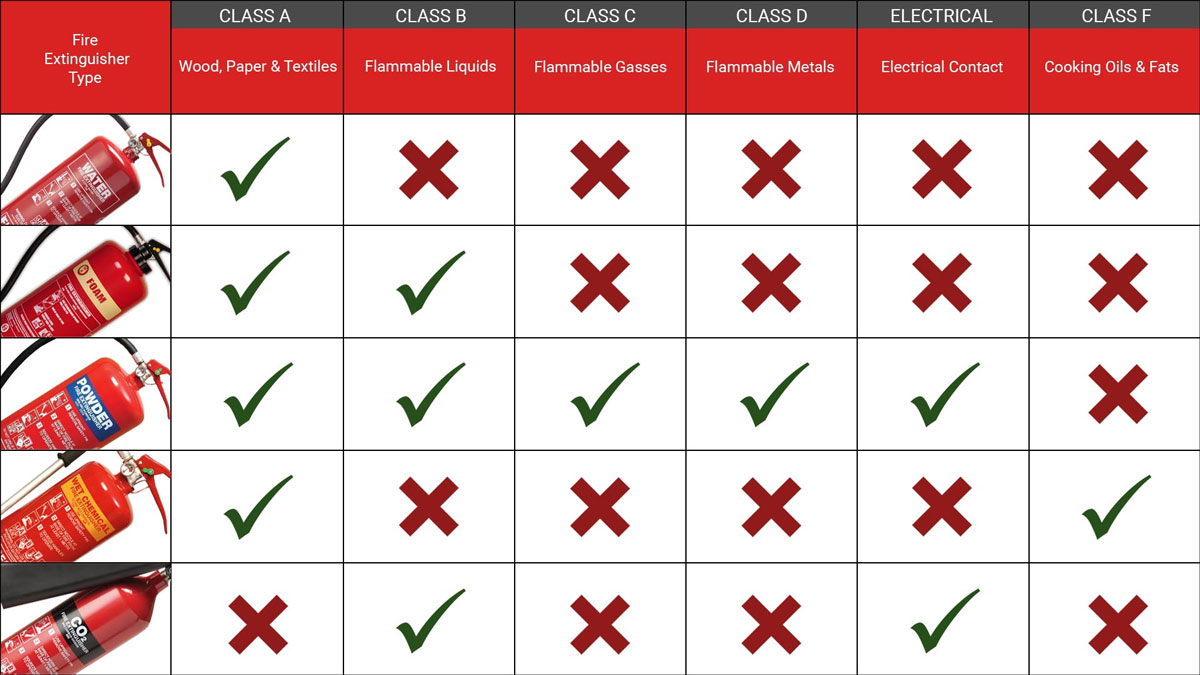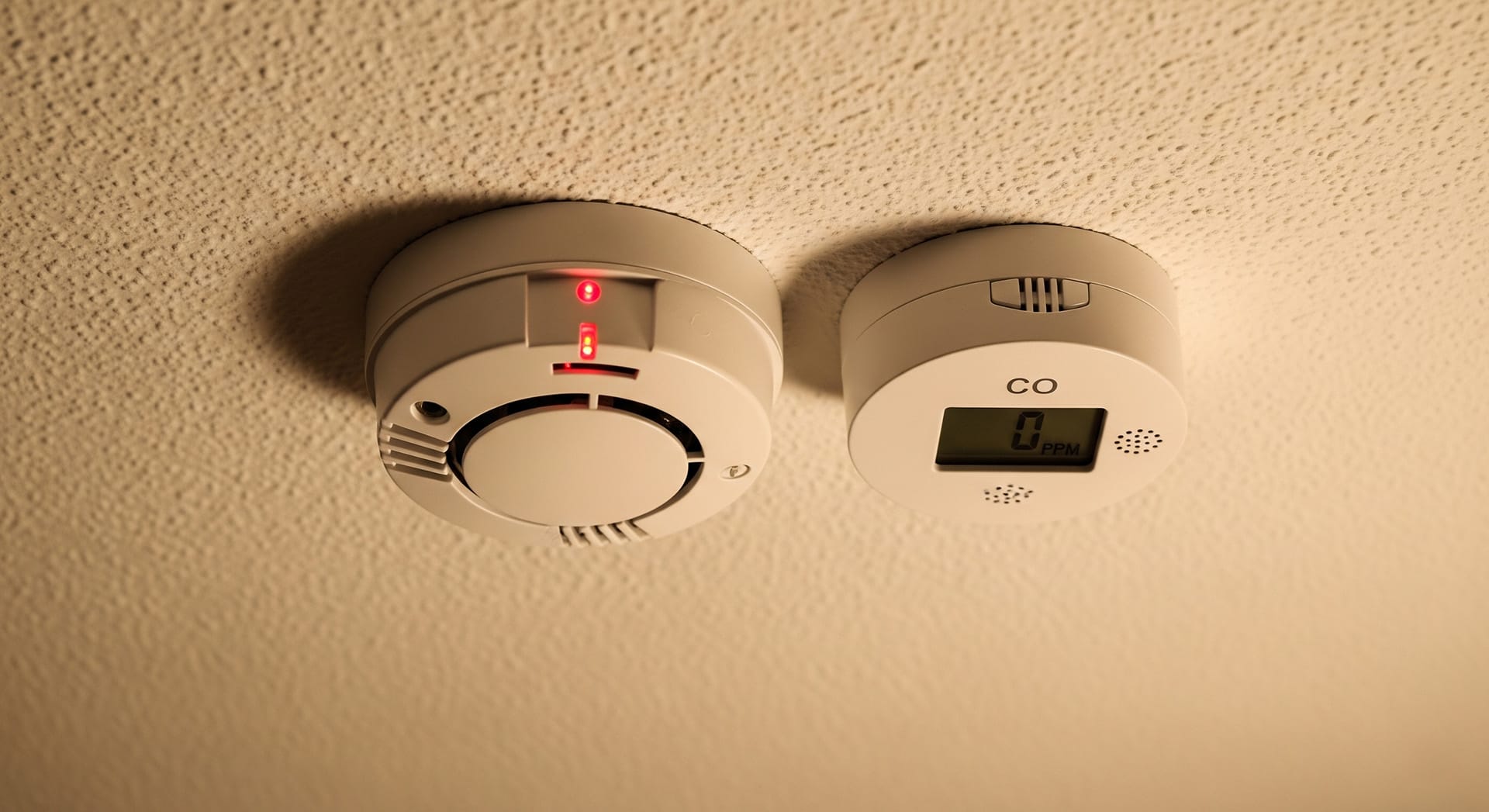6 Common Fire Safety Myths
Debunking 6 Common Fire Safety Myths: What Every UK Business & Landlord Needs to Know

Fires can have a devastating impact on lives and livelihoods, a reality that resonates deeply with UK businesses and landlords. While fire safety might appear straightforward, a landscape of dangerous misconceptions persists. These widespread beliefs can foster complacency, lead to non-compliance with vital regulations, and ultimately result in avoidable tragedies. This article aims to dismantle six common fire safety myths, offering clear, actionable truths rooted in UK fire safety legislation. The objective extends beyond merely avoiding penalties; it is fundamentally about safeguarding people and property. Navigating these complexities effectively often requires expert assistance.
Myth 1: "Fire Risk Assessments Are Only for Large Companies."
This is a pervasive and perilous misconception. The truth is that fire risk assessments (FRAs) form a legal cornerstone for nearly all non-domestic premises in England and Wales. Under the Regulatory Reform (Fire Safety) Order 2005 (FSO), a 'Responsible Person' (RP) - typically an employer, owner, or landlord - is legally mandated to carry out and record a fire risk assessment and implement general fire precautions. This obligation applies irrespective of business size, extending even to small offices or the common areas of buildings containing two or more domestic premises.
The scope of these responsibilities has expanded significantly, particularly for landlords of multi-occupied residential buildings. The Fire Safety Act 2021, which came into force in May 2022, clarified and extended the RP's duties. It explicitly mandates that FRAs must now encompass the building's structure, external walls (including cladding, balconies, and windows), and all doors between domestic premises and common parts. This legislative enhancement was a direct response to critical gaps identified by tragedies such as the Grenfell Tower fire in 2017. Furthermore, Section 156 of the Building Safety Act 2022, effective from October 2023, requires FRAs to be recorded in full, regardless of employee numbers, and enhances cooperation among RPs. These legislative developments demonstrate a reactive trend, where major incidents directly lead to expanded responsibilities for Responsible Persons, indicating that compliance is a dynamic and evolving requirement. Consequently, RPs cannot assume their past compliance is sufficient; they must remain abreast of ongoing legislative changes, which often necessitates continuous expert support. Fire risk assessments are not a one-off task; they must be regularly reviewed and updated, especially when circumstances or building layouts change. Ensuring an FRA is comprehensive and compliant can be intricate, highlighting the value of expert Fire Risk Assessment services conducted by competent professionals.
Myth 2: "Fire Extinguishers Are One-Size-Fits-All."
The belief that any fire extinguisher can tackle any fire is profoundly dangerous and can exacerbate an emergency. The UK recognises six distinct classes of fire, each demanding a specific approach.

| Fire Class | Materials Involved | Recommended Extinguisher Type(s) | UK Colour Code | When NOT to Use |
| Class A | Combustible solids (wood, paper, textiles) | Water, Foam, Dry Powder, Water Mist | Red, Cream, Blue, White with Red | Electrical, Flammable Liquids, Gases, Cooking Oils |
| Class B | Flammable liquids (petrol, oils, paints) | Foam, CO2, Dry Powder, Water Mist | Cream, Black, Blue, White with Red | Class A (for CO2), Cooking Oils (for CO2) |
| Class C | Flammable gases (methane, butane) | Dry Powder, Water Mist | Blue, White with Red | Electrical equipment over 1000V (for Dry Powder) |
| Class D | Combustible metals (magnesium, lithium) | Specialist Dry Powder | N/A | Most other extinguishers |
| Class F | Cooking oils and fats (chip-pan fires) | Wet Chemical | Yellow | Most other extinguishers |
| Electrical | Live electrical equipment | CO2, Water Mist, (Dry Powder) | Black, White with Red, (Blue) | Water, Foam (can cause electrocution/damage) |
Using a water extinguisher on an electrical fire, for instance, risks electrocution, while foam may prove ineffective on flammable metals. Proper selection is therefore critical. Businesses must ensure they possess various types of extinguishers, clearly marked and easily accessible. Legislation stipulates that occupants should be no further than 30 metres from the nearest extinguisher. The "one-size-fits-all" misconception highlights a dangerous gap between theoretical knowledge and practical application. While individuals may generally understand what an extinguisher is, they often lack the crucial understanding of when and how to use specific types, underscoring the indispensable nature of practical training.
For more information on the right type of fire extinguisher, read this article.
Myth 3: "Sprinklers Cause More Damage Than Fire / Are All You Need for Fire Protection."

This myth, often perpetuated by popular media, is far from the truth. Sprinklers are exceptionally effective and efficient fire suppression tools, though they are always part of a larger fire safety system. Sprinkler systems are engineered to activate only in the immediate vicinity of the fire, not throughout the entire building. In fact, between 90% and 98% of fires are controlled or extinguished by the activation of just one or two sprinkler heads. The water damage incurred from sprinklers is substantially less than the devastation caused by a spreading fire or the thousands of litres firefighters might deploy. Importantly, there has been no recorded loss of life in UK properties where fire sprinklers have been installed. They are not triggered by smoke, nor do all heads activate simultaneously. The persistence of the "Hollywood myth" regarding sprinklers presents a significant public perception challenge that fire safety professionals must actively counter. This misinformation can deter investment in a proven life-saving technology.
While highly effective, sprinklers are not a standalone solution. They constitute a vital component of a comprehensive fire safety strategy that must also incorporate fire risk assessments, appropriate training, clear evacuation routes, and other fire-fighting equipment. Sprinklers can also offer architectural design flexibility, potentially reducing other structural fire protection requirements.
Myth 4: "Fire Alarms Are Enough for Full Protection."

While fire alarms are unequivocally essential for providing early warning, they represent only one piece of a much larger fire safety puzzle. A truly comprehensive fire safety strategy extends well beyond mere alarms. It must include clear evacuation plans, adequate emergency lighting to illuminate escape routes, and appropriate fire-fighting equipment.
For landlords, the Smoke and Carbon Monoxide Alarm (Amendment) Regulations 2022 (England) are particularly critical. Landlords are legally required to ensure at least one smoke alarm is installed on each storey used as living accommodation, and a carbon monoxide alarm is fitted in any room containing a fixed combustion appliance (excluding gas cookers). These alarms must be in working order at the commencement of each new tenancy, and landlords bear the responsibility for repairing or replacing faulty alarms once notified. Failure to comply with these regulations can result in fines up to £5,000. While not always legally mandated, interlinked alarms are strongly recommended for enhanced safety. The detailed requirements for landlords concerning smoke and carbon monoxide alarms underscore a legislative trend towards extending fire safety responsibilities into private dwellings. This reflects a recognition that residential fires pose a significant risk, particularly from smoke inhalation, which was identified as the most common cause of fire-related fatalities in the year ending March 2023. This indicates that fire safety is increasingly viewed holistically, encompassing not just workplaces but also residential properties, and moving beyond basic detection to include comprehensive escape and mitigation strategies.
Myth 5: "Fire Safety Is a 'Set It and Forget It' Task."
Fire safety is not a static checkbox; it is an ongoing, dynamic responsibility that demands continuous attention and maintenance. Equipment and plans necessitate regular inspection, testing, and updates to remain effective and compliant. Fire extinguishers, for instance, should be inspected annually. Fire alarms require weekly occupant or self-checks (such as pressing the test button for five seconds and vacuuming detectors) and professional inspection by a 'competent person' at least every six months, as recommended by BS 5839. More complex systems may even require quarterly servicing. Emergency lighting needs a brief functional 'flick-test' at least once a month (which can be conducted in-house) and a full duration test (lasting 1-3 hours) at least annually by a professional, in accordance with BS 5266-1. Furthermore, fire risk assessments must be updated whenever significant changes occur in the workplace, such as alterations to layout or operational shifts. All tests and repairs must be meticulously recorded in a logbook.
For professional servicing, it is advisable to engage third-party certified, BAFE accredited companies. The requirement for regular, documented maintenance and the emphasis on "competent persons" or third-party certification indicates a broader shift towards professionalisation and accountability within the fire safety industry. This implies that businesses and landlords are increasingly expected to engage qualified experts rather than relying on internal, untrained staff for critical safety checks. The "set it and forget it" mentality is not only dangerous but also a direct violation of legal requirements that mandate professional, ongoing engagement.
Myth 6: "I Don't Need to Worry About Fire Safety Because I'm Insured."
Relying solely on insurance for fire safety constitutes a critical misstep. Insurance serves as a financial safety net, not a substitute for proactive prevention and compliance. Insurance cannot protect lives or prevent injuries to staff, customers, or residents. It will not prevent business interruption, loss of clients, or reputational damage. Non-compliance with fire safety regulations can lead to severe legal penalties and fines, which insurance typically will not cover. Crucially, failing to maintain fire safety equipment or neglecting to update a fire risk assessment can
void commercial property insurance, potentially leading to denied claims in the event of an incident. While not strictly legally required, professional indemnity and public liability insurance are essential for those issuing fire safety certificates, as they can be held liable for negligence or non-compliance. This underscores the chain of responsibility throughout the fire safety ecosystem. The "I'm insured" belief reveals a fundamental misunderstanding of risk management, where financial mitigation is mistakenly equated with primary prevention. This highlights a need to reframe fire safety from a cost/insurance perspective to one of life safety and business resilience. The clear relationship between negligence in fire safety and a cascade of negative outcomes (harm, business loss, legal issues, financial non-coverage) demonstrates that insurance is a secondary financial recovery mechanism, not a primary risk management strategy.
Your Partner in UK Fire Safety
Fire safety is a serious, ongoing commitment, not a matter of guesswork or outdated beliefs. Understanding and acting on these truths is paramount for protecting lives, safeguarding assets, and ensuring legal compliance. Leaving fire safety to chance or misconception is not an option; proactive measures and expert guidance are indispensable.
Fire Guard Services, with decades of frontline experience from former Fire Services members, is dedicated to safeguarding people and properties. The company offers a comprehensive range of services, from Fire Risk Assessments and Fire Extinguishers to Fire Alarms, Emergency Lighting, and Staff Training. Fire Guard Services helps businesses and landlords achieve and maintain full compliance with British Standards fire safety legislation and regulatory requirements. The focus is on proactive protection, safeguarding people, property, and business continuity, well beyond what insurance alone can offer.
Take advantage of a free full site survey and quotation to ensure premises are fully compliant and safe. Fire Guard Services offers 24/7 emergency callout and provides a dedicated account engineer to deliver reliable support. Partner with Fire Guard Services today for expert fire protection and peace of mind.
